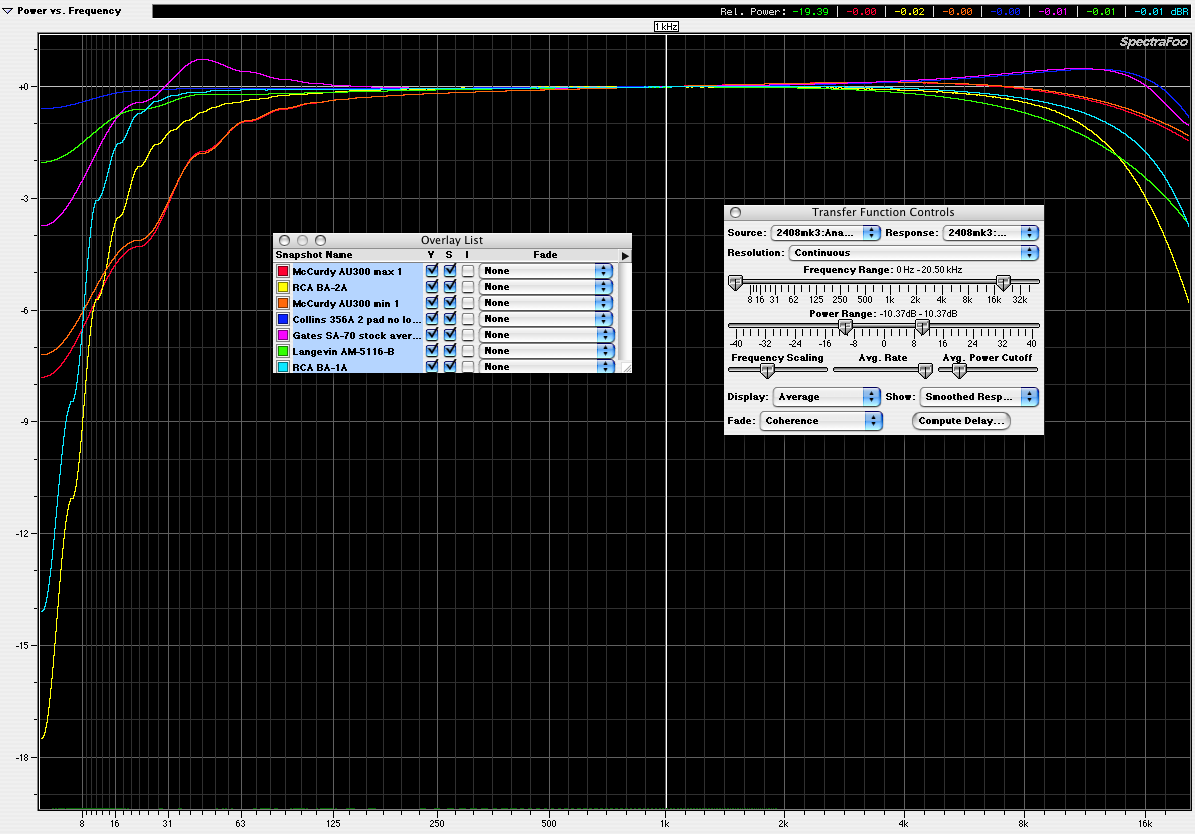[quote author="CJ"]UTC output curves are similar-RCA
Langevin bottom is great, that C core is superior to lams.
McCurdy needs more pri inductance.
I would guess that the units that vary most with different input pad resistances is going to be the transformers with the least turns.
DCR gets combined with X-L at a 90 degree angle to form the resultant, which is Z, or impedance.
This transformer DCR interacts with the pad DCR, so you will get different curves due to different impedances, but the variation will be slight, hopefully.[/quote]
Good theory on the pad interaction. I could easily post input DCR's for consideration. The Langevin is the highest, followed by the RCA.
All transformers are custom part #s, rather than publicly available stuff.
Collins is ADC. - the high rise disappears without resistive shunt terminated input. On paper the Altec 458/459 does this too, but I've not looked at them yet. They had Collins built all the communications gear for the moonshots for some very good reasons.
Gates is UTC LS grade in CG cans. - the low and high bumps here are feedback tailoring, and you get more typical UTC curves without it.
Langevin is Langevin.
McCurdy is Hammond iron I believe.
Both RCA pre-date UTC branding, and are of undetermined origin. I am trying to determine if they are in-house, Ferranti, or UTC. The terminal boards are unlike any ever used by UTC. (CJ, I sent you one of this type output awhile back)




